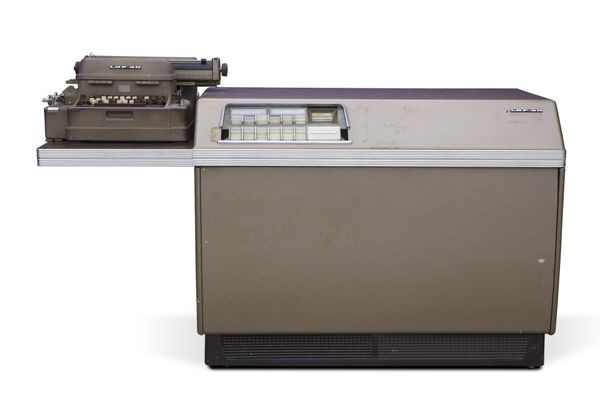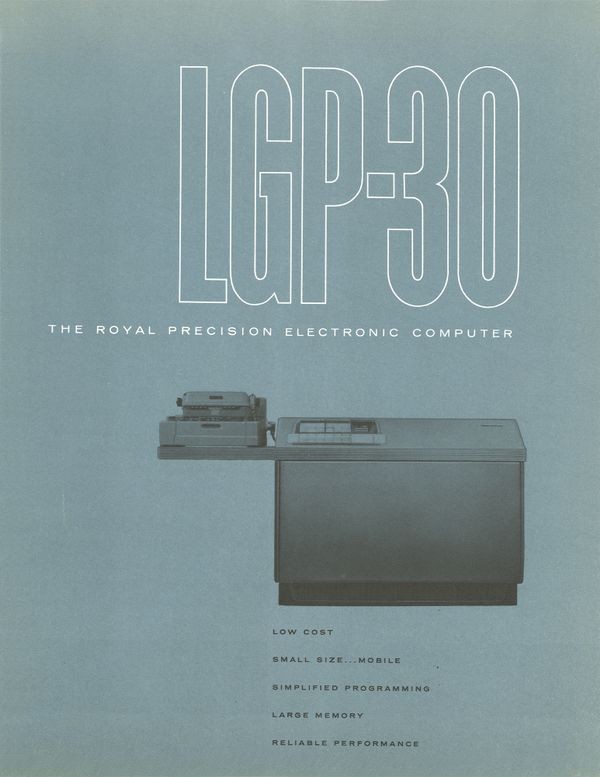Librascope LGP-30
Librascope General Precision LGP-30
Librascope developed this small, drum-based computer for engineering and education. With only 113 vacuum tubes and 1,450 diodes, it used conventional office power and required no air conditioning. Although difficult to program, it was the first computer for many organizations.
Librascope LGP-30
Physicist Stan Frankel, intrigued by small, general-purpose computers, developed the MINAC at Caltech in 1954. The Librascope division of defense contractor General Precision bought Frankel’s design, releasing the LGP-30 in 1956.
Used for science and engineering as well as simple data processing, the LGP-30 was a “bargain” at less than $50,000.
LGP-30 with operators
Although designed for engineering applications, the LGP-30 found its way into offices. Any space big enough for a desk was sufficient.
View Artifact DetailRoyal Precision LGP-30 advertisement
A key selling point for small computers was their easy installation and use in an office environment. Plus, of course, “an extensive library of programs.”
View Artifact Detail




